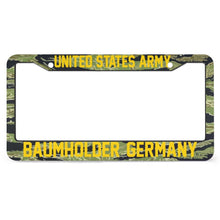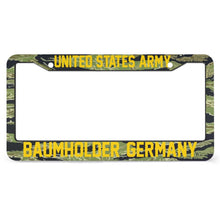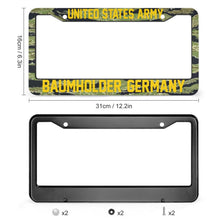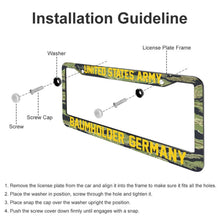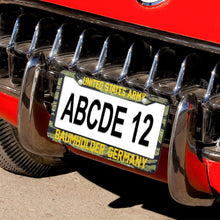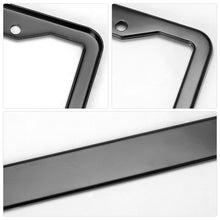
BAUMHOLDER GERMANY - COLD WAR - All Over Print License Plate Frame
Type: Aluminum, Suitable for all standard US plates, UV Printing, One-side Printing
- 5.93 Oz. Made of Aluminum, smooth and comfortable.
- Two holes, Black/Silver frame, aluminum skin thickness of 1mm, two nail accessories are included. Note: Suitable for American plates only .
- The upper end of the license plate is provided with two holes, 1 piece.
- Gift good things, suitable for holiday gifts, for most license plates, decorate your car with a very aesthetic license plate frame.
- Sizes: 16x31cm.Length(cm/in)31/12.2,Width(cm/in)16/6.3.
- Wipe and clean regularly.
COLD WAR VETERAN
Cold War Recognition Certificate: Authorized by the United States Congress in 1997
Cold War Victory Medal: An official medal of the U.S. National Guard and an unofficial military medal of the United States
Military decorations of the Cold War: Includes the Armed Forces Expeditionary Medal, Korea Defense Service Medal, Korean Service Medal, Medal for Humane Action, and National Defense Service Medal
In June 1955, the 16th Infantry Regiment became the first Big Red One unit to return to the United States via GYROSCOPE. The new duty station for the regiment, as well as for the rest of the Big Red One was Fort Riley, Kansas. In early 1957, the 1st Infantry Division began to reorganize under the Pentomic Tables of Organization and Equipment (TOE). An entirely new organization, the “battle group,” was to be organized. The 1st Battle Group at Fort Riley now remained the only element of the regiment assigned to the Big Red One,. After spending 2 years at Fort Riley, in March 1959, the 1st Battle Group was transferred to Baumholder, Germany, and assigned to the 8th Infantry Division. Over the next three years, the battle group functioned as part of the US Army Europe’s first line of defense against potential Soviet aggression against Europe. The next element of the regiment to actually organize under the Pentomic concept was the 3rd Battle Group, 16th Infantry.
In May 1959, the 3rd Battle Group was activated at Worcester, Massachusetts, and assigned to the 94th Infantry Division. On 7 January 1963, it was reorganized and redesignated as the 3rd Battalion, 16th Infantry and reassigned to the 187th Infantry Brigade (Separate). It was the first unit of the regiment to reorganize under what was known as the Reorganization of Army Divisions (ROAD) that eliminated the Pentomic structure of five battle groups. The 1st Battle Group remained at Baumholder until 1 April 1963 when it was reorganized and redesignated as the 1st Battalion, 16th Infantry and reassigned to the Big Red One at Fort Riley. Though the battalion was still active, only the colors and a few soldiers were sent back to Fort Riley. Six months later on 1 October 1963, the 1st Battalion, 16th Infantry was reformed at Wildflecken, Germany, by reflagging the 2nd Battle Group, 8th Infantry. Therefore, though technically designated as a battalion, the unit was still configured as a battle group. The plan was to reorganze as a battalion when the unit returned to Fort Riley in February 1964 as part of Exercise LONG THRUST X.






